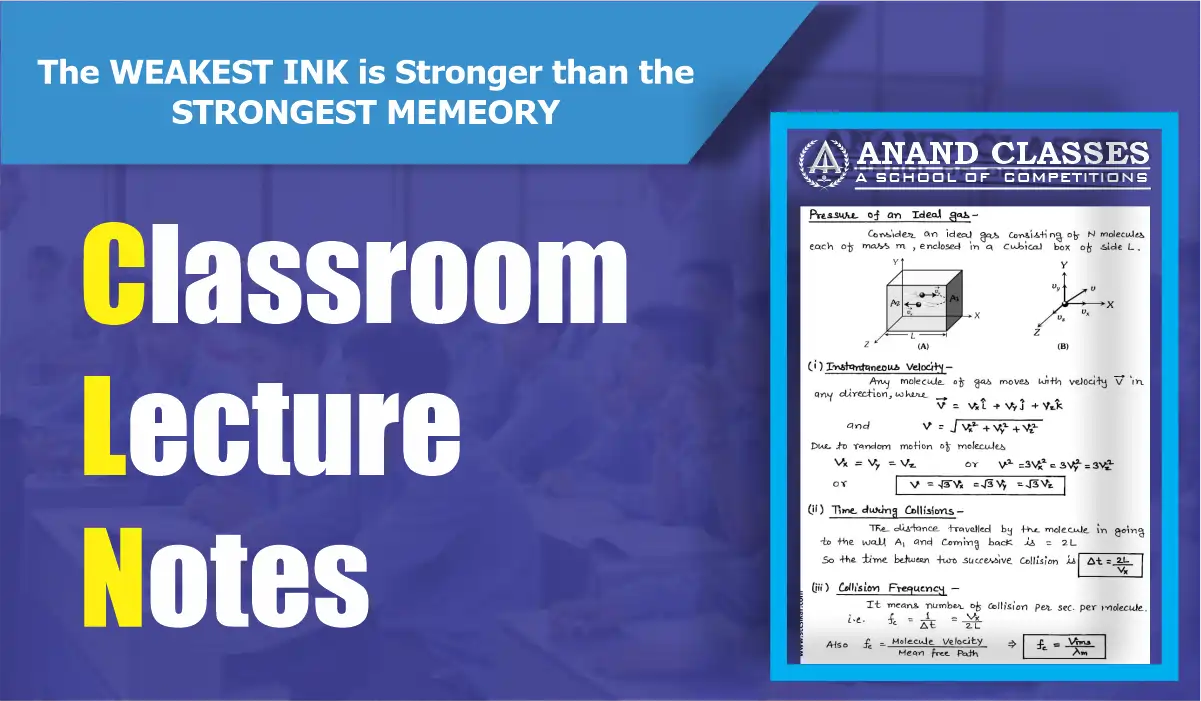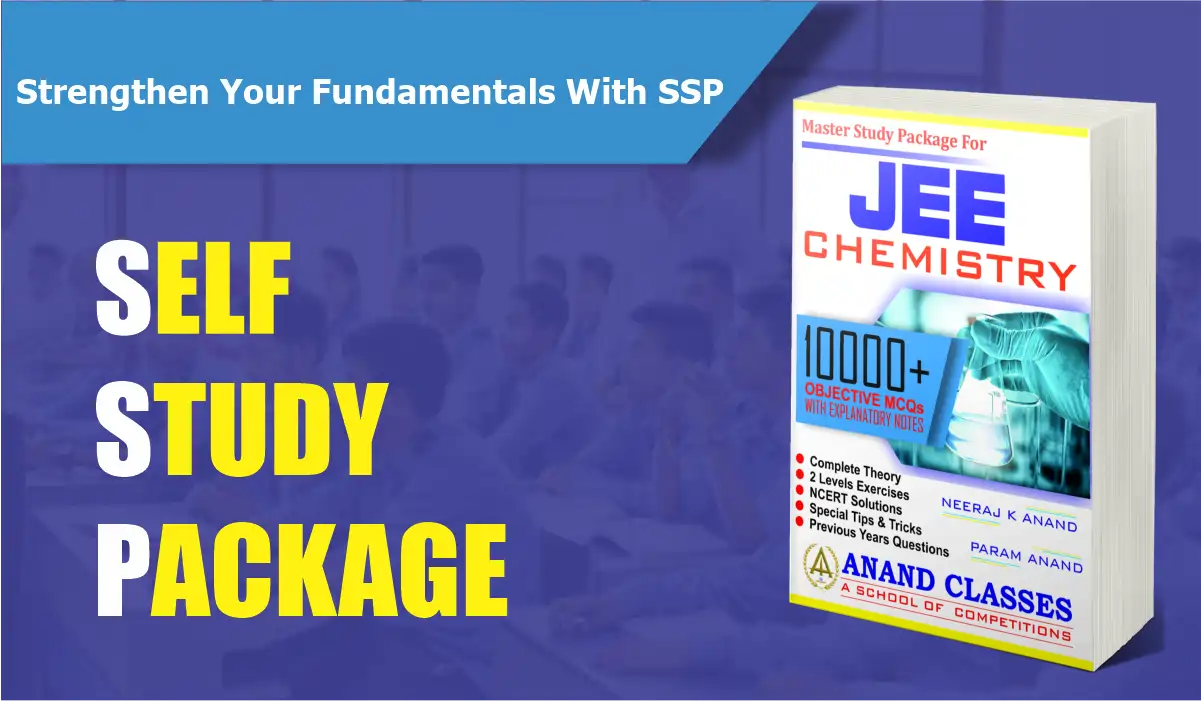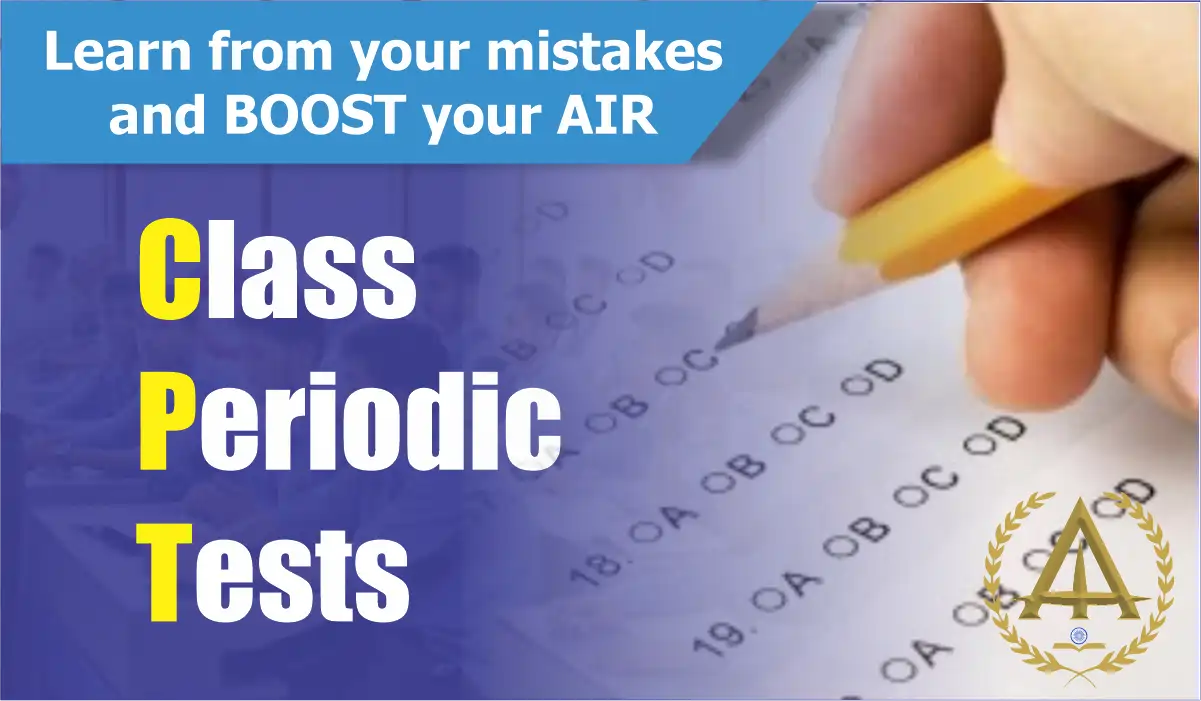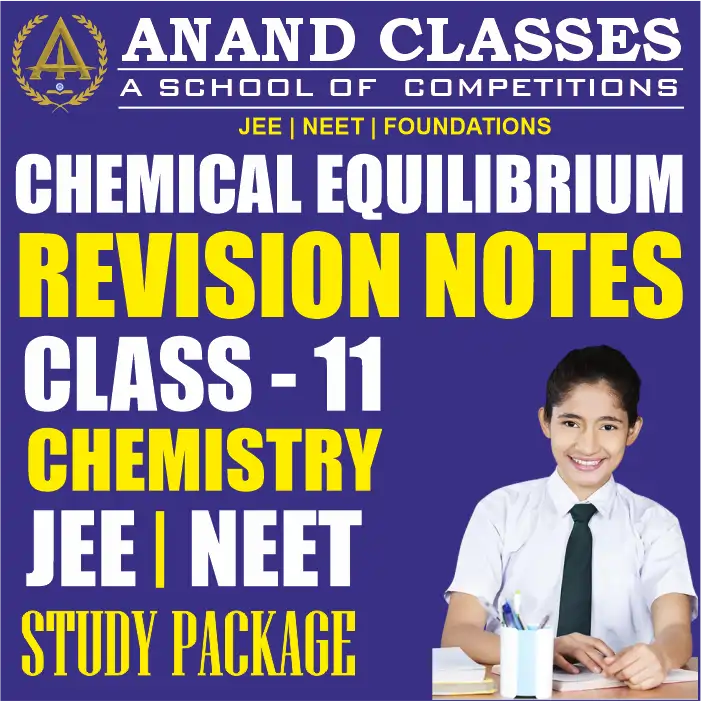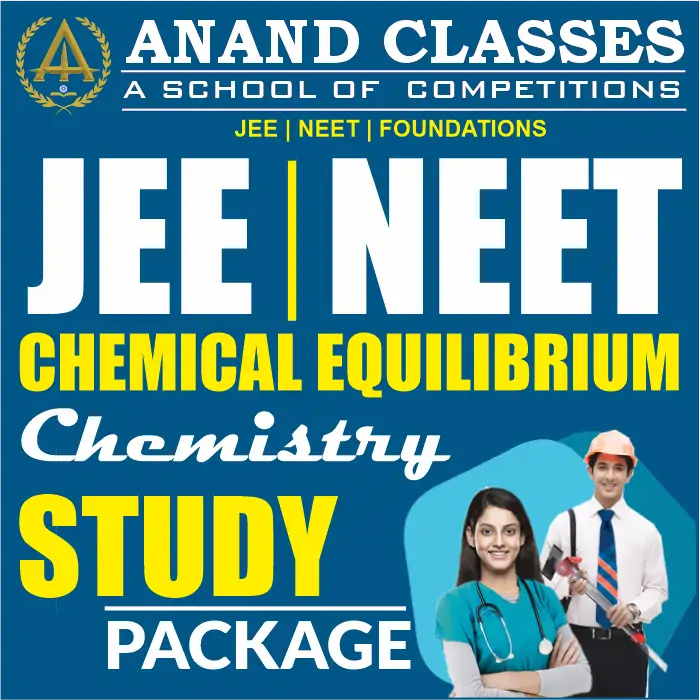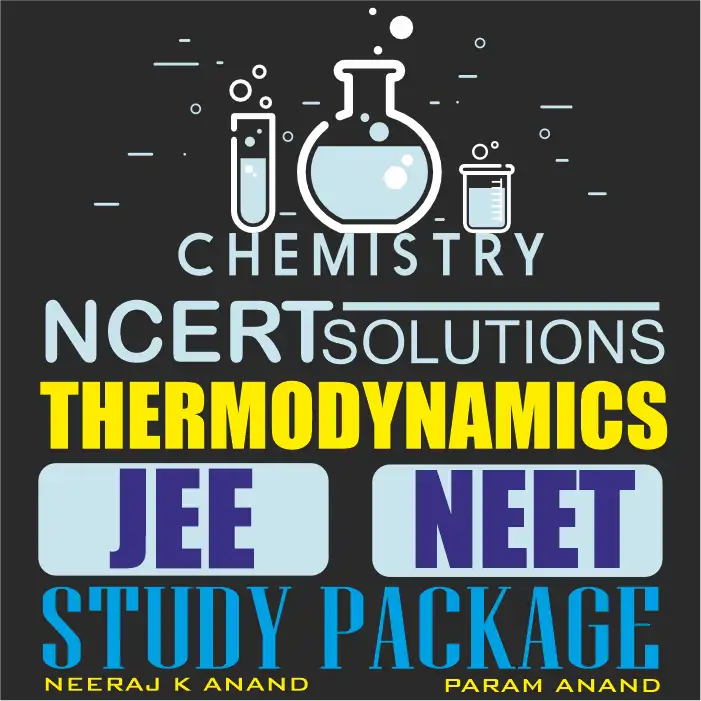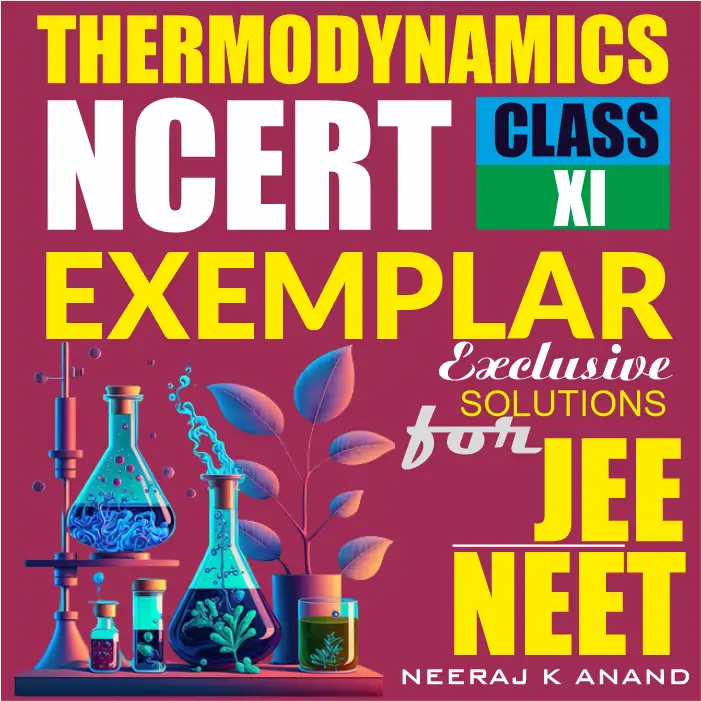Thermodynamics CBSE Important Questions Answers Chemistry Class 11 free pdf download
Access Video Lecture of Chapter Chemical Thermodynamics Class 11 Chemistry
Class 11 Chemical Thermodynamics Important Questions with Answers
Short Answer Type Questions
18.0 g of water completely vapourises at 100°C and 1 bar pressure and the enthalpy change in the process is 40.79 kJ mol–1. What will be the enthalpy change for vapourising two moles of water under the same conditions? What is the standard enthalpy of vapourisation for water?
Answer.
Given that, the amount of water is 18.0 g, and the pressure is 1 bar.
As we all know, 18.0 g H2O = 1 mole H2O.
Enthalpy change for vaporising 1 mole of H2O = 40.79 kJ mol–1
∴ Enthalpy change for vaporising 2 moles of H2O = 2 × 40.79 kJ = 81.358kJ
Standard enthalpy of vaporisation at 100℃ and 1 bar pressure,
Δvap H2O = + 40.79 k J mol–1.
One mole of acetone requires less heat to vapourise than 1 mol of water. Which of the two liquids has a higher enthalpy of vapourisatIon?
Answer.
Acetone requires less heat to vaporise due to the weak force of attraction between molecules.
As a result, water has a higher enthalpy of vaporisation.
It can be represented as:
Δvap(water) > Δvap (acetone)
Standard molar enthalpy of formation, ΔfH0 is just a special case of enthalpy of reaction, ΔrH0. Is the ΔrHӨ for the following reaction same as ΔfH0 ? Give reason for your answer. CaO(s) + CO2(g) → CaCO3(s); ΔfH0 = –178.3 kJ mol–1
Answer.
No, the ΔrH0 for the given reaction is not same as ΔfH0.
The standard enthalpy change for the formation of one mole of a compound from its elements in their most stable states (reference states) is called standard molar enthalpy of formation, ΔrH0.
CaO(s) + C(s) + 3/2 O2(g) → CaCO3(s)
This reaction is different from the given reaction. Hence, ΔrH0 ≠ ΔfH0.
The value of ΔfH0 for NH3 is – 91.8 KJ mol–1. Calculate enthalpy change for the following reactIon:
2NH3 (g) → N2 (g) +3H2 (g)
Answer.
ΔfH0 is given for formation. For the reverse reaction, ΔfH0 changes sign because the opposite of an exothermic reaction is an endothermic reaction.
So, for one mole, ΔfHӨ for decomposition is – (-91.8) = 91.8.
However, two moles are decomposing here.
Therefore, ΔfH0 = 2 × 91.8 = 183.6 KJ mol–1.
Enthalpy is an extensive property. In general, if enthalpy of an overall reaction A→B along one route is ΔrH and ΔrH1, ΔrH2, Δr H3 ….. represent enthalpies of intermediate reactions leading to product B. What will be the relation between ΔrH for overall reaction and Δr H1 , Δr H2 ….. etc. for intermediate reactions?
Answer.
In general, if the enthalpy of an overall reaction A→B along one route is ΔrH and ΔrH1, ΔrH2, Δr H3 ….. represent enthalpies of reaction leading to the same product B through another route, then we have ΔrH =ΔrH1 + ΔrH2 + Δr H3 +…..
The enthalpy of atomisation for the reaction CH4(g)→ C(g) + 4H (g) is 1665 kJ mol–1. What is the bond energy of C–H bond?
Answer.
Enthalpy of atomisation of 4 moles of C−H bonds = 1665 kJ mol–1
∴ C−H bond energy, per mole = 1665 kJ mol–1/4 = 416.2 kJmol–1.
Use the following data to calculate Δlattice HӨ for NaBr.
Δsub HӨ for sodium metal = 108.4 kJ mol–1
Ionization enthalpy of sodium = 496 kJ mol–1
Electron gain enthalpy of bromine = – 325 kJ mol–1
Bond dissociation enthalpy of bromine = 192 kJ mol–1
ΔfHӨ for NaBr (s) = – 360.1 kJ mol–1
Answer.
According to Hess’s Law,
ΔfHӨ = Δsub HӨ + ΔIEHӨ + ΔdissHӨ + ΔtgHӨ + U
Δsub HӨ for Na metal = 108.4 kJ/mol
I.E. of Na = 496 k/mol
ΔtgHӨ of Br = – 325 kJ mol–1
ΔdissHӨ of Br = 192 kJ mol–1
ΔfHӨ for NaBr = – 360.1 kJ mol–1
ΔfHӨ = Δsub HӨ + I.E. of Na + ΔdissHӨ + ΔtgHӨ + U
-360.1 = 108.4 +496 + 96 + (-325) – U
U = +735.5 kJ/mol
Given that ΔH = 0 for mixing of two gases. Explain whether the diffusion of these gases into each other in a closed container is a spontaneous process or not?
Answer.
It is a spontaneous process. Although the change in enthalpy is zero, the change in randomness or disorder (i.e., ΔS) increases. As a result, in the equationΔG = ΔH – TΔS, the term TΔS will be negative. As a result, ΔG will be negative.
Heat has a randomising influence on a system and temperature is the measure of the average chaotic motion of particles in the system. Write the mathematical relation which relates these three parameters.
Answer.
Heat has a randomising influence on a system and temperature is the measure of the average chaotic motion of particles in the system.
The mathematical relation which relates these three parameters is ΔS = qrev / T
Here, ΔS = change in entropy
qrev = heat of reversible reaction
T = temperature
Increase In enthalpy of the surroundings is equal to decrease In enthalpy of the system. Will the temperature of system and surroundings be the same when they are In thermal equilibrium?
Answer.
Yes, when the system and the surroundings are in thermal equilibrium, their temperatures are the same.
At 298 K. Kp for the reaction N2O4 (g) ⇄ 2NO2 (g) is 0.98. Predict whether the reaction is spontaneous or not.
Answer.
For a spontaneous reaction, ΔrG° is -ve.
ΔrG° = – RT ln Kp = – RT ln (0.98)
In (0.98) is – 0.02
∴ΔrG° = – RT × –0.02
∴ Δ G°will be positive.
Hence, the reaction will be non-spontaneous.
The standard molar entropy of H2O (l) is 70 J K–1 mol–1. Will the standard molar entropy of H2O (s) be more, or less than 70 J K–1 mol–1?
Answer.
The solid form of H2O is ice. In ice, molecules are less random than in liquid water.
Thus, molar entropy of H2O (s) < molar entropy of H2O (l). The standard molar entropy of
H2O (s) is less than 70 J K–1 mol–1.
Identify the state functions and path functions out of the following: enthalpy, entropy, heat, temperature, work, free energy.
Answer.
State Functions: Enthalpy, Entropy, Temperature, Free energy
Path Functions: Heat, Work
The molar enthalpy of vaporization of acetone is less than that of water. Why?
Answer.
Acetone lacks a hydrogen bond, so intermolecular forces are weaker, causing it to boil/evaporate quickly, lowering the molar enthalpy of vaporisation. Furthermore, because acetone lacks a polar O-H bond, it has a low enthalpy. Water has both a non-polar region and a strong hydrogen bond.
Which quantity out of ΔrG and ΔrGӨ will be zero at equilibrium?
Answer.
ΔrG will always be zero.
ΔrGӨ is zero for K = 1 because ΔrGӨ = – RT ln K
ΔrGӨ will be non-zero for other values of K.
Predict the change in internal energy for an isolated system at constant volume.
Answer.
There is no energy transfer as heat or work in an isolated system,
so w=0 and q=0.
According to the first law of thermodynamics-
Δ U = q + w = 0 + 0 = 0
ΔU = 0
Although heat is a path function but heat absorbed by the system under certain specific conditions is independent of path. What are those conditions? Explain.
Answer.
(i) At constant volume-
By first law of thermodynamics: q = ΔU + (–w)
(–w) = pΔV
∴ q = ΔU + pΔV
ΔV = 0, since volume is constant.
∴ qV = ΔU + 0 ⇒ qV = ΔU = change in internal energy
(ii) At constant pressure
qp = ΔU + pΔV
But, ΔU + pΔV = ΔH
∴ qp = ΔH = change in enthalpy.
So, at a constant volume and at constant pressure heat change is a state function because it is equal to change in internal energy and change in enthalpy respectively which are state functions.
Expansion of a gas in vacuum is called free expansion. Calculate the work done and the change in internal energy when 1 litre of ideal gas expands isothermally into vacuum until is total volume is 5 litre?
Answer.
(–w) = pext (V2 – V1) = 0 × (5 –1) = 0
For isothermal expansion q = 0
By first law of thermodynamics-
q = ΔU + (–w)
0 = ΔU + 0
so, ΔU = 0
Heat capacity (Cp) is an extensive property but specific heat (c) is an intensive property. What will be the relation between Cp and c for 1 mol of water?
Answer.
For water, heat capacity = 18 × specific heat
or Cp = 18 × c
Specific heat, c = 4.18 Jg–1 K–1
Heat capacity, Cp = 18 × 4.18 JK–1 = 75.3 J K–1.
The difference between Cp and Cv can be derived using the empirical relation H = U + pV. Calculate the difference between Cp and Cv for ten moles of an ideal gas.
Answer.
For 1 mole of gas
Cp – Cv = R
For n moles of gas the relation is Cp – Cv = nR = 10 × 4.184 J
Cp – Cv = 41.84 J.
If the combustion of 1g of graphite produces 20.7 kJ of heat, what will be molar enthalpy change? Free the significance of sign also.
Answer.
Molar enthalpy change of graphite = enthalpy change for 1g carbon ×
molar mass of carbon
ΔH = – 20.7 kJ g–1 × 12 g mol–1
ΔH = – 2.48 × 102 kJ mol–1.
The exothermic nature of the reaction is indicated by the negative sign of ΔH.
The net enthalpy change of a reaction is the amount of energy required to break all the bonds in reactant molecules minus the amount of energy required to form all the bonds in the product molecules. What will be the enthalpy change for the following reaction?
H2(g) + Br2(g) → 2HBr(g)
Given that the Bond energy of H2, Br2 and HBr is 435 kJ mol–1, 192 kJ mol–1 and 368 kJ mol–1 respectively.
Answer.
ΔrHӨ = Bond energy of H2 + Bond energy of Br2 – 2 × Bond energy of HBr
ΔrHӨ= 435 + 192 – (2 × 368) kJ mol–1
ΔrHӨ = –109 kJ mol–1.
Derive the relationship between ΔH and ΔU for an ideal gas. Explain each term Involved in the equation.
Answer.
When heated, the volume of solids and liquids does not change significantly. As a result, if the volume changes, ∆V is insignificant.
∆H = ∆U + P∆V
∆H = ∆U + P(0)
∆H = ∆U
When gases are involved in the reaction, the difference between the change in internal energy and the change in enthalpy becomes significant.
Consider a chemical reaction that takes place at a constant temperature, T, and pressure, P. Let’s say the reactants’ volume is VA and the number of moles in the reactants is nA. Similarly, the product volume is VB, and the number of moles in the product is nB.
We know from the ideal gas equation that-
pV = nRT
pVA = nART
pVB = nBRT
Thus,
pVA – pVB = nART – nBRT
p(VA – VB)= RT(nA – nB)
p∆V = ∆ngRT
∆H = ∆U + p∆V
∆H = ∆U + ∆ngRT
Extensive properties depend on the quantity of matter but intensive properties do not. Explain whether the following properties are extensive or intensive.
Mass, internal energy, pressure, heat capacity, molar heat capacity, density, mole fraction, specific heat, temperature and molarity.
Answer.
- Mass is an extensive property because it is dependent on the amount of matter.
- Internal energy is proportional to volume, making it an extensive property.
- Because pressure is independent of the amount of substance, it is an intensive property.
- Heat capacity is an extensive property, whereas molar heat capacity is an intensive property because it is the ratio of two extensive properties.
- Density is an intensive property because it is the ratio of two extensive properties.
- Since mole fraction is the ratio of two extensive properties, it is an intensive property.
- Specific heat is an intense property because it is independent of the amount of substance.
- An intensive property is a ratio of two extensive properties therefore molarity is an intensive property.
- Temperature is also an intensive property as it is independent of the amount of substance.
An ideal gas is allowed to expand against a constant pressure of 2 bar from 10 L to 50 L in one step. Calculate the amount of work done by the gas. If the same expansion were carried out reversibly, will the work done be higher or lower than the earlier case? (Given that 1 L bar = 100 J).
Answer.
Work done in the process can be calculated as-
w = –Pex (Vf – Vi)
w = – 2 × 40 = – 80 bar = – 8 kJ
The negative sign indicates that the system is working on the environment. Because internal and external pressures are nearly equal at every step, the work done will be more in the reversible expansion.
ΔG is net energy available to do useful work and is thus a measure of “free energy”. Show mathematically that ΔG is a measure of free energy. Find the unit of ΔG. If a reaction has positive enthalpy change and positive entropy change, under what condition will the reaction be spontaneous?
Answer.
∆STotal = ∆Ssys + ∆Ssurr
∆STotal = ∆Ssys + ( – ∆Hsys/T)
T∆STotal = T∆Ssys – ∆Hsys
For spontaneous change, ∆STotal > 0
∴ T∆Ssys – ∆Hsys > 0
-(∆Hsys – T∆Ssys) > 0
But, ∆Hsys – T∆Ssys = ∆Gsys
∴ –∆Gsys > 0
∆Gsys = ∆Hsys – T∆Ssys < 0
∆Hsys = Enthalpy change of a reaction
T∆Ssys = Energy which is not available to do useful work
∆Gsys = Energy available for doing useful work
- If ∆G is negative (< 0), the process is spontaneous.
- If ∆G is positive (> 0), the process is non spontaneous.
Unit of ∆G is Joule.
The reaction will be spontaneous at high temperature.
Thermodynamics is a branch of chemistry that deals with the relationship between heat and other forms of energy. It is a complex subject, but it is also very important for understanding many chemical processes.
If you are preparing for the CBSE Class 11 Chemistry exam, it is important to have a good understanding of thermodynamics. Here ANAND CLASSES will provide you with some important questions and answers on thermodynamics, which you can use to revise for your exam.
Chemical Thermodynamics CBSE Important Questions and Answers for final exam Chemistry Class 11 free pdf download
Class 11 chemistry important questions with answers are provided here for Chapter 6 – Chemical Thermodynamics. These important questions are based on the CBSE board curriculum and correspond to the most recent Class 11 chemistry syllabus. By practising these Class 11 important questions, students will be able to quickly review all of the ideas covered in the chapter and prepare for the Class 11 Annual examinations as well as other entrance exams such as NEET and JEE.
CBSE Chapter Chemical Thermodynamics HOTs Questions & Answers for Class 11 pdf
CBSE Chapter Chemical Thermodynamics HOTs Questions for Class 11 download here at free of cost. you can check here CBSE Chapter 6 Chemical Thermodynamics HOTs Questions for Class 11 based on latest syllabus and examination pattern. CBSE Chapter 6 Chemical Thermodynamics HOTs Questions helps to improve conceptual understanding and develops thinking skills. CBSE Chapter 6 Chemical Thermodynamics HOTs Questions and answers for Class 11 are available for free download in pdf format.
CBSE Board introduced questions based on – Higher Order Thinking Skills (HOTs). The primary objective here was to improve the evaluating and analytical skills of a student. A lot of students tend to only focus on memorizing information and relying on cramming learning. Therefore CBSE Board decided to dedicate a large part of the question paper to Chapter 6 Chemical Thermodynamics HOTs Questions as they typically concentrate on a student’s ability to reason, analyze, process, justify, and evaluate information. Since a large part of CBSE question papers is based on HOTS, it is necessary for students to get ample practice with these questions. Experts at SelfStudys have compiled HOTs question for Class 11 for Science and Maths.
CBSE releases Chapter 6 Chemical Thermodynamics HOTs Questions for Class 11 every year. These papers are published prior to the examinations so that students can do the study. The students should practice Chapter 6 Chemical Thermodynamics HOTs Questions to increase perfection which will help him to get good marks in CBSE examination. Based on CBSE and NCERT guidelines same pattern as released every year.
CBSE Chapter Chemical Thermodynamics Important HOTs Conceptual Short & Long Questions and Answers for Class 11 PDF
In simple words, CBSE Class 11 HOTs Questions are the skills that involve learning that goes beyond mere comprehension. Higher Order Thinking Skills (HOTs) as the name suggests refers to thinking skills that correspond to the more complicated forms of learning within the cognitive domain. Chemistry HOTS Question HOTs Questions involve behaviour ranging from the simplest to the most difficult.
CBSE Chapter 6 Chemical Thermodynamics HOTs Questions which are basically designed to improve the learning skill of students and test their comprehension, analytical thinking and problem-solving skill. In CBSE board exams, most of the questions which are of higher difficulty level are taken from NCERT books. So students must widely practice all the CBSE Chapter 6 Chemical Thermodynamics HOTs Questions so that they can easily attempt even the difficult questions asked in board examinations. While practising the CBSE Chapter 6 Chemical Thermodynamics HOTs Questions, students must keep a reliable source to seek precise solutions so that they may know the right way to approach the answers to Chemistry HOTS Question HOTs Questions. In this page, we are providing the CBSE Class 11 HOTs Questions for two major subjects such as Maths and Science. All the CBSE Chapter 6 Chemical Thermodynamics HOTs Questions provided here are prepared by experts to bring accurate study material for Class 11 students. All these CBSE Chapter 6 Chemical Thermodynamics HOTs Questions are designed in a step-wise manner to provide an easy and simple explanation so that students can easily learn the concepts and facts used.
Understanding of CBSE Chapter Chemical Thermodynamics HOTs Conceptual Short & Long Questions and Answers for Class 11 PDF
Class 11 requires a strategic approach and the CBSE Chapter Chemical Thermodynamics HOTs Questions provided on our website for every chapter form a cornerstone for thorough preparation. Class 11 is one of the most important stages in students life. This Chapter Chemical Thermodynamics HOTs Questions can help to get a high overall score and hence needs dedicated preparation.
In the run-up to board exams of Class 11, it is important to build the base itself. Getting a good mark in Class 11 examinations will not only boost your confidence but will also give you the motivation to study for the next class. In addition, our website also has important questions for Class 11 subject wise solutions which will help students to refer to the answers once they are done answering in order to self-evaluate their performance and correct any errors.
Our aim is to make this CBSE Chemistry HOTS Question available to every student. This will enable you to practice the subject better and get high marks in the exam. Practising these Chapter Chemical Thermodynamics HOTs Questions is a good way to ensure that you have not left any topic and that you have complete coverage of the whole syllabus. Also, students can use these Chemistry HOTS Question to take a mock test and use it as a tool to gauge their preparation. The Chapter 6 Chemical Thermodynamics HOTs Questions and answers are developed by referring to previous year question papers given in the NCERT textbooks. The format of the answers is in accordance with the latest recommended format given by the CBSE. This allows students to study the answer and replicate it in the examination in similar language and get good marks.
Why Focus on Thermodynamics ?
Thermodynamics is a branch of physical chemistry that explores the principles governing the transfer of heat and energy during chemical reactions. It is not only essential for theoretical knowledge but also has practical applications in daily life. Whether you aim to excel in CBSE exams or simply want to understand the world around you better, thermodynamics is a fascinating subject.
The Importance of Important Questions
While a comprehensive understanding of thermodynamics is crucial, practicing with important questions is equally vital. These questions are carefully curated to highlight key concepts, common problem areas, and the types of questions you might encounter in your CBSE Class 11 chemistry exam. Additionally, they serve as a valuable resource for self-assessment and review.
Important Questions
- What is thermodynamics?
- What are the different types of thermodynamic systems?
- What is internal energy?
- What is enthalpy?
- What is the first law of thermodynamics?
- What is the second law of thermodynamics?
- What is Gibbs free energy?
- What is the relationship between Gibbs free energy and spontaneity?
- What is entropy?
- What is the third law of thermodynamics?
- What is the difference between an endothermic and an exothermic reaction?
- What is the difference between a spontaneous and a non-spontaneous reaction?
- What is the difference between a reversible and an irreversible reaction?
Answers
- Thermodynamics is the branch of chemistry that deals with the relationship between heat and other forms of energy.
- There are three types of thermodynamic systems: closed systems, open systems, and isolated systems.
- Internal energy is the total energy of a system, including its kinetic and potential energy.
- Enthalpy is the total heat content of a system.
- The first law of thermodynamics states that energy is conserved.
- The second law of thermodynamics states that entropy always increases over time.
- Gibbs free energy is a measure of the spontaneity of a chemical reaction.
- The relationship between Gibbs free energy and spontaneity is given by the equation ΔG = -RT ln K, where ΔG is the change in Gibbs free energy, R is the gas constant, T is the temperature, and K is the equilibrium constant.
- Entropy is a measure of the disorder of a system.
- The third law of thermodynamics states that the entropy of a system approaches zero as the temperature approaches absolute zero.
- An endothermic reaction is a reaction that absorbs heat from the surroundings.
- An exothermic reaction is a reaction that releases heat to the surroundings.
- A spontaneous reaction is a reaction that occurs without any external input of energy.
- A non-spontaneous reaction is a reaction that does not occur without any external input of energy.
- A reversible reaction is a reaction that can proceed in both the forward and reverse directions.
- An irreversible reaction is a reaction that can only proceed in one direction.







